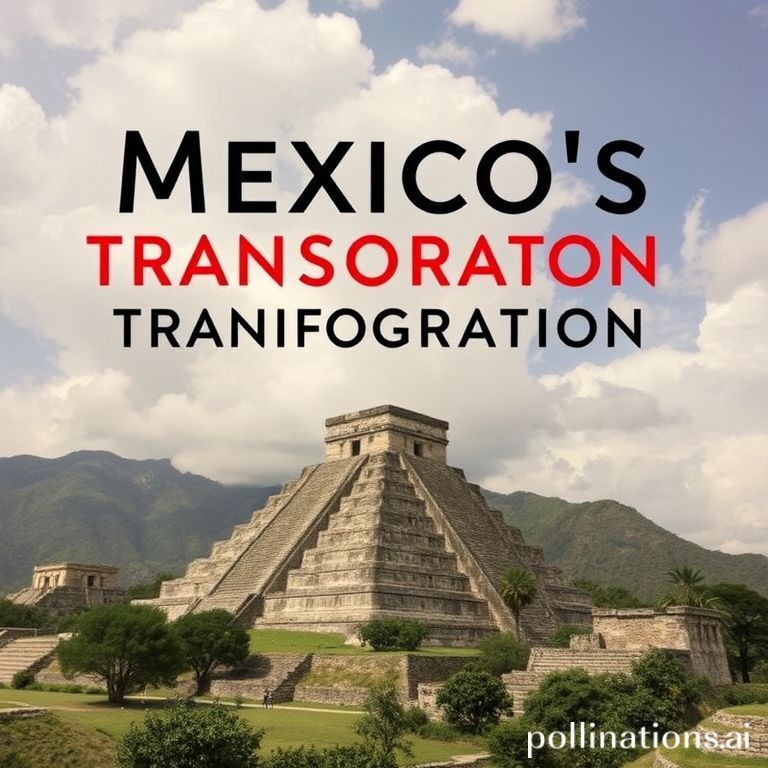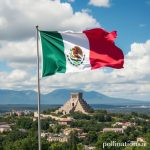Mexico, a land steeped in history and brimming with vibrant culture, has undergone a remarkable transformation throughout the ages. From the rise and fall of ancient civilizations to the complexities of modern society, the story of Mexico is one of constant evolution, resilience, and enduring spirit. Exploring this transformation provides invaluable insights into the nation’s identity and its place in the world.
This journey through time reveals not just the historical events that shaped the country, but also the cultural, economic, and social shifts that have molded the Mexican people. Understanding this transformation is key to appreciating the rich tapestry of Mexican life today.
Ancient Civilizations: Laying the Foundation
The pre-Columbian era saw the flourishing of diverse and sophisticated civilizations across what is now Mexico. These societies left an indelible mark on the landscape and culture, shaping the very foundations of Mexican identity.
The Olmecs: The Mother Culture
- Considered the “mother culture” of Mesoamerica, the Olmecs (1400-400 BCE) established complex social structures and artistic traditions.
- Their colossal head sculptures and sophisticated agricultural techniques influenced subsequent civilizations.
The Maya: Masters of Mathematics and Astronomy
- The Maya civilization (250-900 CE) excelled in mathematics, astronomy, and architecture.
- Their intricate calendar system and monumental cities, such as Chichen Itza and Palenque, stand as testaments to their intellectual and artistic prowess.
The Aztecs: Building an Empire
- The Aztecs (1345-1521 CE) rose to power in the Valley of Mexico, establishing a vast empire with its capital at Tenochtitlan (modern-day Mexico City).
- Known for their sophisticated social organization, impressive engineering feats, and complex religious beliefs, the Aztecs dominated the region until the arrival of the Spanish.
The Colonial Era: A Clash of Cultures
The arrival of the Spanish in 1519 marked a turning point in Mexican history, initiating a period of profound cultural exchange and conflict.
Conquest and Colonization
Led by Hernán Cortés, the Spanish conquest brought about the fall of the Aztec Empire and the establishment of Spanish rule. This period witnessed the introduction of European languages, religion, and political systems, leading to significant social and cultural changes.
The Viceroyalty of New Spain
For nearly three centuries, Mexico was governed as the Viceroyalty of New Spain. This era saw the exploitation of natural resources, the rise of a rigid social hierarchy, and the blending of indigenous and Spanish cultures. The construction of grand colonial cities like Mexico City and Puebla reflected the power and influence of the Spanish crown.
Independence and Revolution: Forging a Nation
The desire for self-determination and social justice fueled Mexico’s struggle for independence in the early 19th century. This era of upheaval and transformation laid the groundwork for the modern Mexican state.
The War of Independence
Led by figures like Miguel Hidalgo and José María Morelos, the Mexican War of Independence (1810-1821) sought to overthrow Spanish rule and establish an independent nation. The struggle was long and arduous, but ultimately resulted in Mexico’s liberation.
The Mexican Revolution
The early 20th century witnessed the Mexican Revolution (1910-1920), a period of intense social and political upheaval. Driven by demands for land reform, workers’ rights, and democratic governance, the revolution transformed Mexican society and paved the way for the creation of a new constitution.
Modern Mexico: Challenges and Opportunities
Today, Mexico is a dynamic and complex nation grappling with the challenges of globalization, economic development, and social inequality. Despite these challenges, Mexico continues to evolve and assert its place on the world stage.
Economic Growth and Globalization
Mexico has experienced significant economic growth in recent decades, driven by trade, investment, and tourism. However, the benefits of globalization have not been evenly distributed, leading to persistent social and economic disparities.
Cultural Identity and Preservation
Mexico’s rich cultural heritage remains a source of pride and identity. Efforts to preserve indigenous languages, traditions, and artistic expressions are crucial to maintaining the country’s unique cultural tapestry.
Conclusion
The transformation of Mexico through the ages is a story of resilience, adaptation, and cultural fusion. From the ancient civilizations that laid the foundation to the struggles for independence and the challenges of modern society, Mexico’s journey has been marked by both triumphs and tribulations. By understanding this rich history, we gain a deeper appreciation for the complexities and enduring spirit of this remarkable nation.
If you enjoyed this article, don’t forget to explore more inspiring stories on Life in Mexico!
IMAGE: A vibrant and colorful digital painting depicting the transformation of Mexico through the ages. The scene transitions from ancient Mayan pyramids bathed in the golden light of sunrise to a bustling modern city skyline at sunset. In the foreground, figures representing different eras of Mexican history – an Aztec warrior, a Spanish conquistador, a revolutionary soldier, and a contemporary Mexican artist – stand together, symbolizing the country’s blended heritage. The overall mood is optimistic and celebratory, with a focus on the rich cultural diversity of Mexico.


